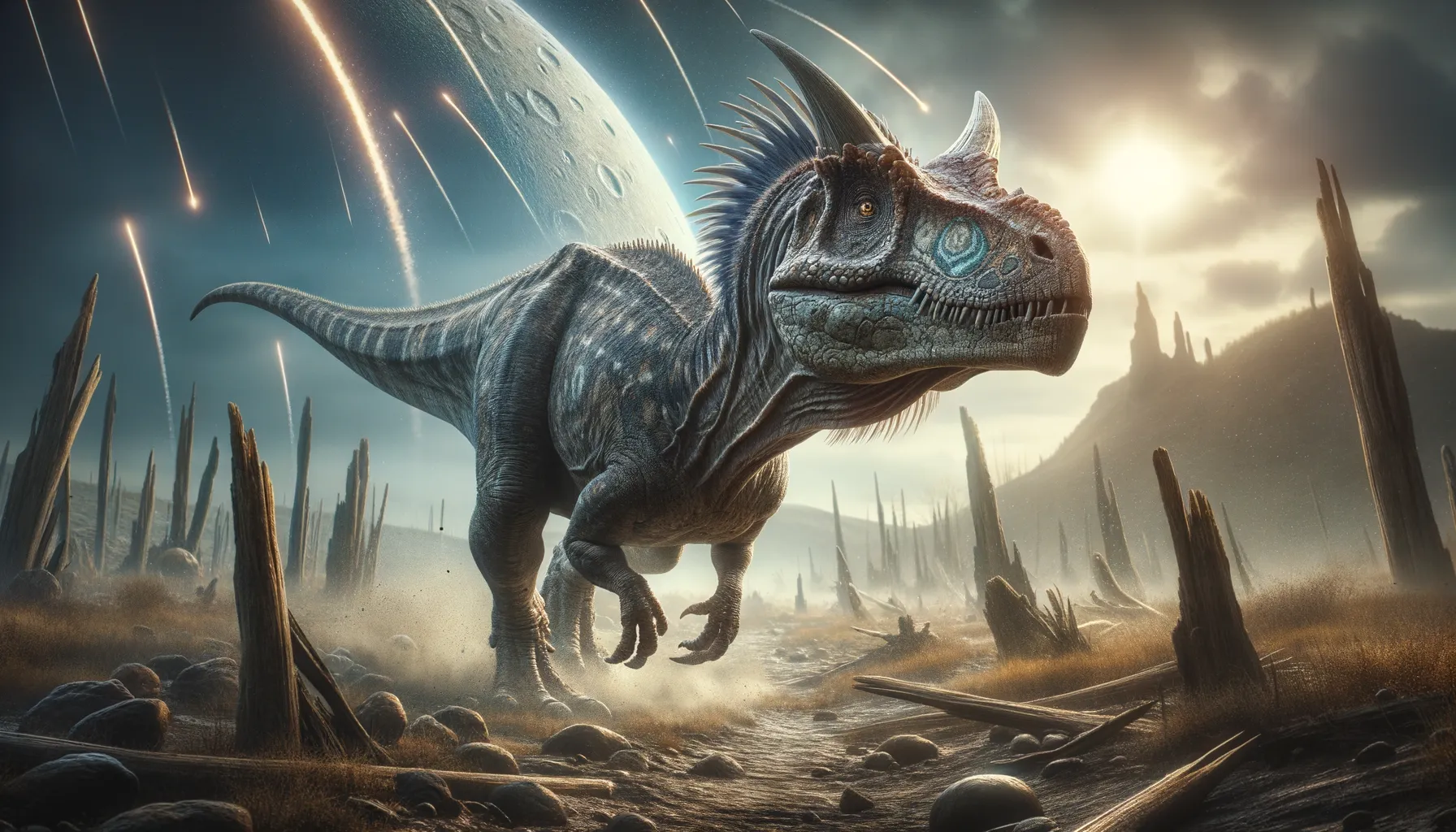
Carnotaurus
The horned predator of prehistoric South America.
Period
Cretaceous
Length
Measured around 7 to 9 meters long.
Height
Stood about 3 meters tall.
Weight
Weighed approximately 1.5 tons.
Carnotaurus was a distinct theropod dinosaur known for its unique features, including small arms and horn-like structures above its eyes. Roaming the Earth during the late Cretaceous period, its anatomy suggests it was a fast and agile predator. Discovered in South America, Carnotaurus adds to our understanding of the diversity and adaptation of predatory dinosaurs.
Diet
Carnotaurus was a carnivore, primarily feasting on other dinosaurs. With its speed and agility, it likely targeted smaller or slower prey. Its diet was essential for its growth and energy needs in its fast-paced environment.
Hunting
Carnotaurus relied on its speed to ambush or outrun its prey, using surprise and quick movements to its advantage. Its strong legs and streamlined body helped it chase down targets quickly in open terrains.
Environmental challenges
Carnotaurus lived in an ever-changing environment with fluctuating climates and prey availability. It had to adapt to competition from other predators sharing the same ecosystem. Seasonal changes would have impacted food sources, requiring flexibility in hunting patterns.
Speed
Fast runner, adapted for quick sprints.
Lifespan
Estimated to be around 20 years.
First discovery
Discovered in 1984 by José Bonaparte.
Fun Facts
- Carnotaurus was a large carnivorous dinosaur that lived around 70 million years ago in what is now South America.
- Carnotaurus had two distinct horn-like structures above its eyes, earning it the nickname 'meat-eating bull'.
- Unlike many other theropods, Carnotaurus had extremely small, almost vestigial arms, which were not used for hunting or grabbing prey.
- It is known for its fast running speed, possibly one of the fastest of all large theropod dinosaurs.
- Carnotaurus had a keen sense of smell and sharp eyesight, making it a highly effective predator.
- The only known skeleton of Carnotaurus was discovered in Argentina in 1984, providing valuable insights into its structure and lifestyle.
- Carnotaurus appeared in several films and documentaries, popularizing its unique appearance and bringing it to public attention.
Growth and Development
Carnotaurus experienced rapid growth during its early years, supported by a diet rich in protein. Juveniles would have faced threats from larger predators, necessitating quick development to reach maturity. Fossil evidence suggests a well-adapted skeletal structure supporting swift movement.
Habitat
Carnotaurus inhabited open plains and forests of what is now South America. It thrived in warm climates, feeding on diverse species within its habitat. The landscape offered ample opportunity for its fast-paced hunting style.
Interaction with other species
Carnotaurus coexisted with various herbivorous dinosaurs, which likely made up a significant portion of its diet. Interspecific competition would have occurred with other large predators over territory and prey. The unique horns may have played a role in displays or confrontations.
Natural lifespan
Carnotaurus likely lived up to 20 years in the wild.
Reproduction
Like many dinosaurs, Carnotaurus likely laid eggs in nests. Fossil evidence suggests some parental care, possibly guarding nests to protect against predators. The reproductive strategies would have ensured the survival of offspring in a competitive environment.
Social behaviour
Carnotaurus may have been solitary or formed loose groups while hunting. Its behavior is inferred from pack hunting evidence in related species. Social interactions might include displays or vocalizations supported by its distinct horns and possible vocal sacs.
Fossil locations
Carnotaurus fossils have predominantly been found in Argentina. The discovery included a nearly complete skeleton, offering significant insights into its anatomy. Such finds contribute greatly to our understanding of its morphology and behavior.
